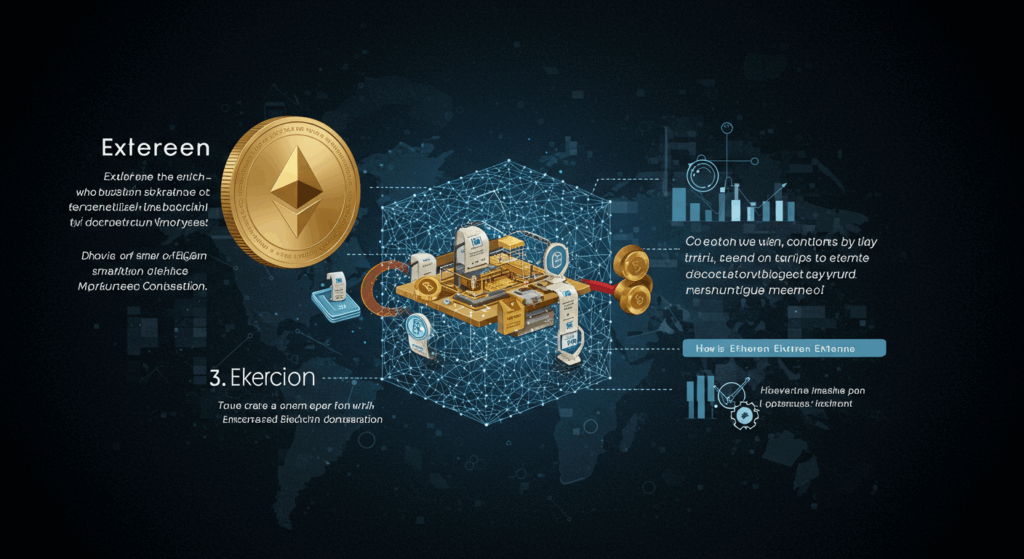Ethereum is more than just a cryptocurrency—it’s a revolutionary platform that has redefined how we think about trust, transactions, and decentralized systems. Since its launch in 2015, Ethereum has grown into one of the most influential technologies in the blockchain space, powering everything from decentralized finance (DeFi) to non-fungible tokens (NFTs). In this post, we’ll dive into what Ethereum is, how it works, and why it continues to shape the future of the internet.
What is Ethereum?
At its core, Ethereum is an open-source, decentralized blockchain platform that enables developers to build and deploy smart contracts—self-executing agreements with the terms of the contract directly written into code. While Bitcoin introduced the world to decentralized digital currency, Ethereum took it a step further by creating a programmable blockchain. This means Ethereum isn’t just a store of value; it’s a global, distributed computing platform.
The native cryptocurrency of Ethereum, called Ether (ETH), is used to pay for transactions and computational services on the network. Think of Ether as the fuel that keeps Ethereum’s engine running.

How Does Ethereum Work?
Ethereum’s blockchain operates on a network of computers (nodes) that work together to validate and record transactions. Here’s a simplified breakdown of its key components:
1. Smart Contracts
Smart contracts are the heart of Ethereum’s innovation. These are programmable scripts that automatically execute when predefined conditions are met. For example, a smart contract could automatically transfer funds to a seller once a buyer confirms receipt of goods. This eliminates the need for intermediaries, reducing costs and increasing efficiency.
2. Ethereum Virtual Machine (EVM)
The EVM is the runtime environment for smart contracts. It’s a virtual computer that exists across all Ethereum nodes, ensuring that smart contracts execute consistently and securely across the network. Developers write smart contracts in languages like Solidity, and the EVM translates them into instructions the blockchain can understand.
3. Consensus Mechanism
Ethereum originally used Proof of Work (PoW), similar to Bitcoin, where miners competed to solve complex mathematical problems to validate transactions. In September 2022, Ethereum transitioned to Proof of Stake (PoS) with “The Merge,” a major upgrade that made the network more energy-efficient. In PoS, validators stake their ETH to secure the network, reducing energy consumption by over 99% compared to PoW.
4. Decentralized Applications (DApps)
DApps are applications built on Ethereum’s blockchain, leveraging smart contracts to offer decentralized alternatives to traditional apps. From DeFi platforms like Uniswap to NFT marketplaces like OpenSea, DApps are transforming industries by removing centralized control.
Why Ethereum Matters
Ethereum’s impact is vast and continues to grow. Here are a few reasons why it’s a game-changer:
- Decentralized Finance (DeFi): Ethereum hosts thousands of DeFi protocols, allowing users to lend, borrow, and trade without banks or financial institutions. As of 2025, DeFi on Ethereum accounts for billions of dollars in locked value.
- NFTs and Digital Ownership: Ethereum popularized NFTs, enabling creators to tokenize digital art, music, and more. This has reshaped how we think about ownership in the digital age.
- Global Accessibility: Anyone with an internet connection can access Ethereum’s network, making it a powerful tool for financial inclusion in underserved regions.
- Scalability Improvements: Ethereum continues to evolve with upgrades like sharding and layer-2 solutions (e.g., Optimism and Arbitrum), addressing scalability challenges and reducing transaction costs.
Challenges Facing Ethereum
Despite its success, Ethereum isn’t without hurdles:
- Scalability: While layer-2 solutions are helping, Ethereum’s base layer can still face high gas fees during peak usage.
- Competition: Other blockchains like Solana, Binance Smart Chain, and Cardano offer faster transactions or lower costs, challenging Ethereum’s dominance.
- Regulatory Uncertainty: As governments worldwide grapple with crypto regulation, Ethereum’s ecosystem could face legal challenges.
The Future of Ethereum
Ethereum’s roadmap is ambitious. Upcoming upgrades aim to improve scalability, security, and sustainability further. The rise of Ethereum-based rollups and sidechains is making transactions faster and cheaper, while innovations like decentralized identity and Web3 applications are pushing Ethereum toward becoming the backbone of a decentralized internet.
As of June 2025, Ethereum remains a leader in the blockchain space, with a vibrant community of developers, users, and investors. Its ability to adapt and innovate ensures it will continue to play a pivotal role in shaping the future of technology.
Conclusion
Ethereum is more than a cryptocurrency—it’s a platform for innovation, enabling a decentralized world where trust is built into the code. Whether you’re a developer building the next big DApp, an artist minting NFTs, or simply curious about blockchain, Ethereum offers endless possibilities. As the ecosystem grows and evolves, one thing is clear: Ethereum is here to stay, and its impact will only deepen in the years to come.
Want to learn more? Dive into Ethereum’s official documentation at ethereum.org or explore DApps to see the platform in action!


